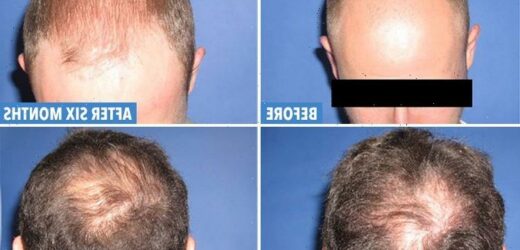INJECTING stomach fat into the scalp could be a radical new way of combating baldness, experts have revealed.
The pioneering new method involves sucking fat cells from a patient and depositing them into the head, in order to stimulate the hair follicles.
A new pilot study has shown an average of 93 per cent increase in hair growth, as well as a 23 per cent increase in "hair count" in just six months.
Dr Edward Ball, from Harley Street's The Maitland Clinic, was one of the authors of the new study.
He said their findings offer "genuine hope"for men and women who suffer "mentally and emotionally" from losing their hair.
"The most common form of male pattern hair loss is something called androgenic alopecia and it affects a substantial chunk of the population – 50 per cent of men," Dr Ball explained.
“And hair loss isn’t just a male affliction, with up to 45 per cent of women experiencing it too.
“As it currently stands, there are two most effective options for patients.
“The most established medications available are finasteride or minoxidil in a bid to halt the initial hair loss in its tracks, or to encourage hair growth, but not all patients tolerate or respond to these treatments.
“The permanent solution to hair loss is hair transplant surgery. Some opt for a mixture of both to maintain the results.
“The problem arises, however, in the fact that a hair transplant sometimes isn’t an option, particularly where hair loss is in its infancy, patients have diffuse thinning, or where there’s poor donor availability.
“So there’s an important gap to fill between these medicinal and transplant options – which is where fat transfer may come in.
“The results of this new study are encouraging indeed.”
Dr Ball and co-author Craig Ziering, of Ziering Medical Beverly Hills, tested the new treatment on six volunteers.
He said the science behind the findings, published in the journal Stem Cells and Cloning: Advances and Applications, is complex.
His team believe there is an important interplay between hair follicle cells and "adipose" connective tissue, which stores fat in large globules.
Their theory was that by adding more adipose tissue to the scalp and around hair follicles, which are present but not growing, they could stimulate hair growth.
The new technique takes adipose from somewhere else in the body, typically the stomach via liposuction.
It's then enhanced with stem cells and injected into affected areas of the scalp.
Six patients took part in the pilot study.
While they were sedated, Dr Ball's team injected around 1ml of enriched fat per square centimetre of scalp, in a "fan-like" pattern.
Their hair was then photographed and documented and monitored again at 12, 24 and 32 weeks.
After six months, the research showed that hair count in patients increased from 17.7 per square inch of scalp to 31.2 – a jump of 23 per cent.
Meanwhile, the growth phase of the hair almost doubled, boosted by 93 per cent.
And hair thickness increased by 24 per cent.
While noting the small number of people taking part, Dr Ball and his team are calling for larger trials.
Hair restoration surgeon Dr Ball, who appeared on Channel 4’s How Not To Get Old, said that while we’re still some time away from the procedure becoming common practice in clinics, the results would open up a whole field of hair loss treatment.
He said: “Hair loss can affect men and women mentally and emotionally.
“Around 40 per cent of men have noticeable hair loss by the time they’re 35, which can cause real distress.
"I know this for a fact, as I went through that precise scenario myself, which is why any new methods of combating baldness are to be applauded and studied further.
“The autologous fat transplantation is exciting in many ways because it improves the growth of hair that’s already there and thickens hair that’s so fine it’s almost invisible.
“The other important thing to note is that autologous fat transplant has been shown to be well tolerated, as it’s been used for many years in other cosmetic surgery procedures to add volume to the face and breasts, in what’s called ‘lipomodelling’.”
Source: Read Full Article










